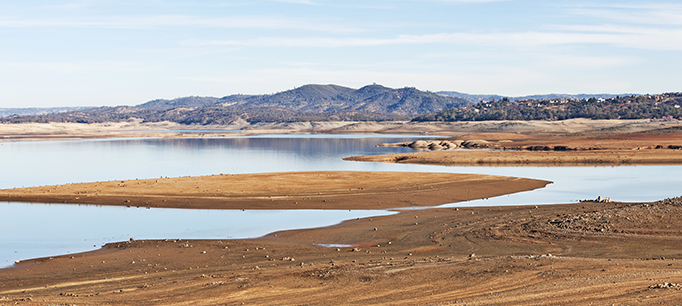How is the state government handling the drought? And what more could be done? A hearing convened by the Senate Natural Resources and Water subcommittee earlier this week delved into the topic, with updates by leaders from the administration on the implementation of drought actions in the urban and rural sectors and in the state’s diverse ecosystems. In a second panel, I joined several other non-governmental experts to describe additional ways forward to solve our short- and long-term water challenges.
My testimony focused on a number of policy priorities that we highlighted in a recent report on drought management. In particular, I emphasized the need for better information as a basis for better water management.
Compared to most other western states and other dry places like Australia, California’s water monitoring and accounting systems are primitive, with significant gaps in information. Without a better understanding of how much water is available in our rivers and groundwater basins, as well as who’s using what, we’re saddled with inefficiencies, inadequate transparency, and greater potential for conflict. This especially matters during droughts, when every drop counts.
On the plus side, the state has recently made some progress in improving water information. Legislation enacted in 2009 requires all surface-water users to report the volumes of water they divert and also requires local agencies to report groundwater levels. Since the drought emergency was declared in January 2014, the State Water Resources Control Board has progressively amped up water-use reporting requirements.
But more should be done to fill the gaps. This includes gathering information on groundwater use—an important component of overall water use, especially during droughts. We also need to account for the volumes of water that cities and farms discharge back into streams as treated wastewater or irrigation runoff; these discharges make up a large share of water supplies in some of our rivers and streams.
Because information is only really useful if it is well organized, the state needs to pay particular attention to developing a coherent water information management system. Currently, agencies and offices that oversee different pieces of the puzzle have different tracking systems and accounting standards, which makes it very hard to get an overall picture of what’s happening in anything close to real time. The last official estimates of water supply and water use for California date back to 2010.
Funds from the state water bond could help pay for this work. In devising our system, we should draw lessons from other states and countries that are further along in this area. And given that California is a global center for the information economy, it may make sense to tap into local “big data” expertise to help build data solutions.
There’s a saying that “You can’t manage what you don’t measure.” The drought is making it ever more important to manage our scarce water supplies for the benefit of our economy, society, and the environment. So we’d better get better at measuring it.


